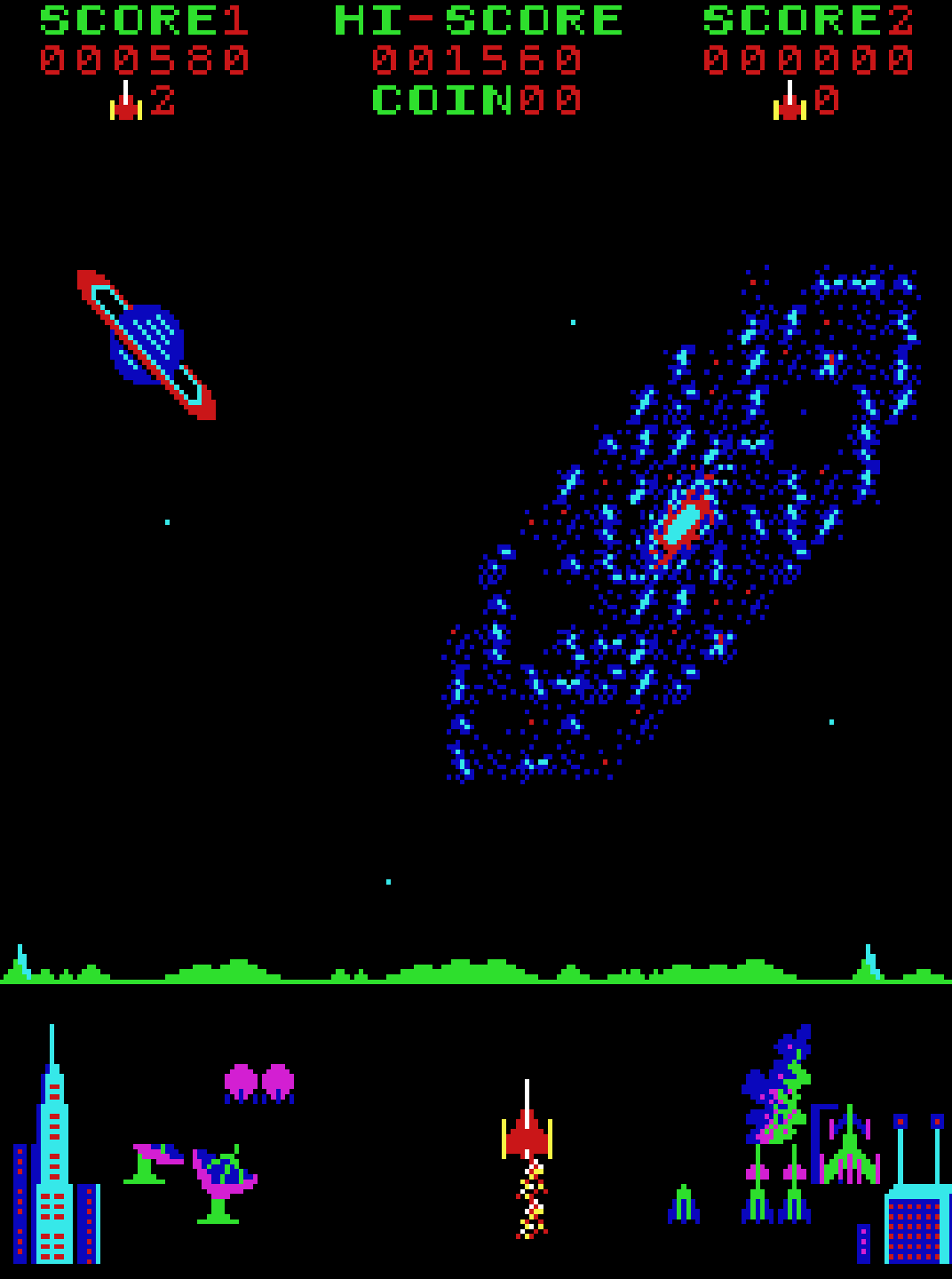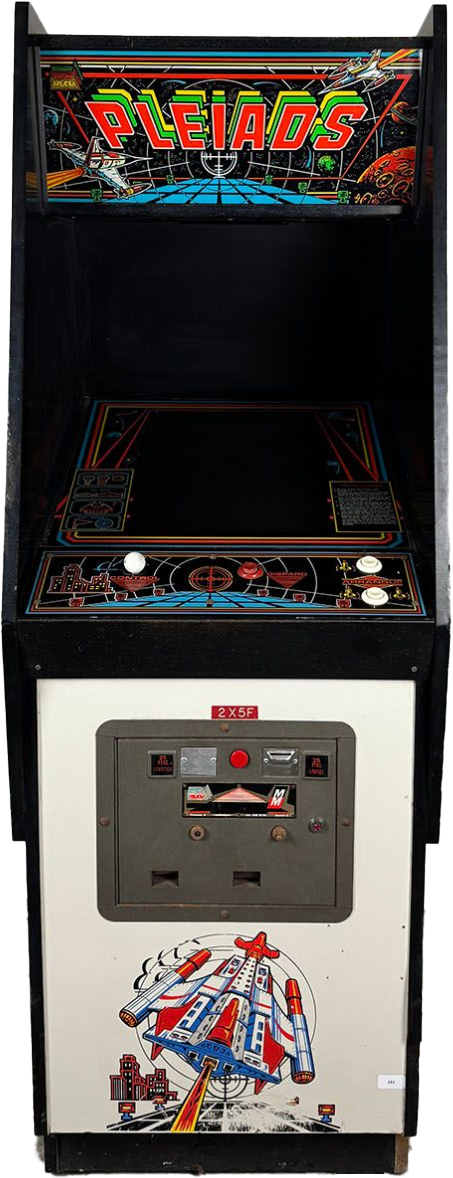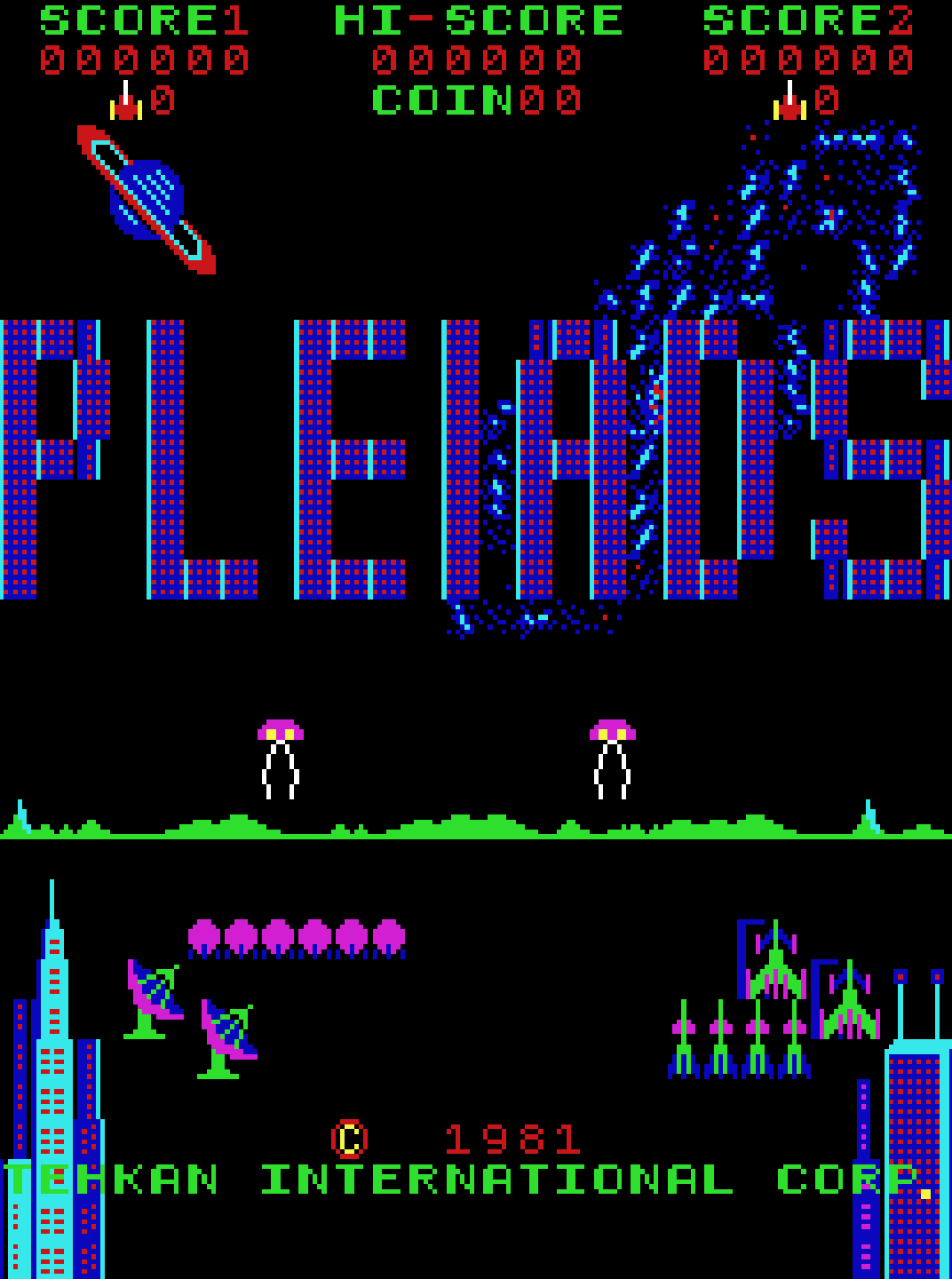Introduction
Released in 1981 by Tehkan (later Tecmo) and distributed by Centuri in North America, Pleiads is a space shooter that builds on the mechanics of Galaxian and Phoenix. Though less remembered today, it offered a surprising amount of variety and challenge across its multi-stage format. With colorful enemy formations, a unique docking sequence, and escalating difficulty, Pleiads was a worthy—if underappreciated—entry in the early wave of fixed shooters.

Development and History
- Developer: Tehkan (Japan)
- Publisher: Centuri (North America)
- Release Date: 1981
Pleiads followed in the wake of space shooter hits like Galaxian (1979) and Phoenix (1980), and is sometimes considered a spiritual or unofficial sequel to both—especially Phoenix, due to similarities in gameplay structure and graphical style.
Tehkan designed the game with four distinct stages per cycle, each offering different mechanics and enemy types. It was an early attempt to add narrative progression and gameplay diversity to the space shooter formula.

Gameplay Video
Gameplay and Mechanics
Core Gameplay
Players control a lone spacecraft defending Earth from waves of alien invaders. The game is divided into four repeating stages:
- Formation Attack: Classic wave-based shooting against alien formations.
- Meteor Shower: Players dodge falling meteors while shooting enemies.
- Landing Bay Defense: Aliens attempt to kidnap astronauts; players must defend the base.
- Docking Stage: Players guide their ship back to base, avoiding barriers.
Key mechanics include:
- Fixed Shooter Movement: The player can move left and right along the bottom of the screen.
- Scrolling Effects: Some sections scroll vertically, breaking from the purely static shooter mold.
- Colorful Sprites and Sounds: Bright visuals and arcade-style explosions give it a distinct 1980s feel.
Challenges
- Enemy Speed: Aliens attack quickly and erratically in later stages.
- Docking Pressure: The docking sequence requires precise movement, adding tension.
- No Continues: One credit meant one run—players had to master the sequence to progress.

Cultural Impact and Legacy
Pleiads may not be a household name, but it played a notable role in arcade history:
- Underrated Sequel: Considered a follow-up to Phoenix, and part of the evolution of the fixed shooter genre.
- Arcade Variety: Its four-stage loop added variety compared to contemporaries like Galaxian.
- Collector’s Curiosity: Original cabinets are relatively rare today but sought after by fans of early '80s shooters.
- Tecmo’s Roots: One of the early titles from Tehkan, which would later become the well-known developer Tecmo.

Fun Facts
- Name Confusion: Often misspelled as “Pleiades,” referencing the star cluster it’s loosely inspired by.
- Regional Differences: Japanese and North American versions had slight graphical and difficulty tweaks.
- Phoenix Connection: Many arcade historians view it as a spiritual successor to Phoenix, though not officially linked by title.
- Multiple Bosses: Enemy formations include mini-boss-like enemies that break standard shooting patterns.

Conclusion
Pleiads may have flown under the radar compared to giants like Galaga, but its creative stage design, escalating difficulty, and blend of action and strategy make it a hidden gem in the golden age of arcades. For fans of fixed shooters or forgotten classics, it’s worth a revisit.

